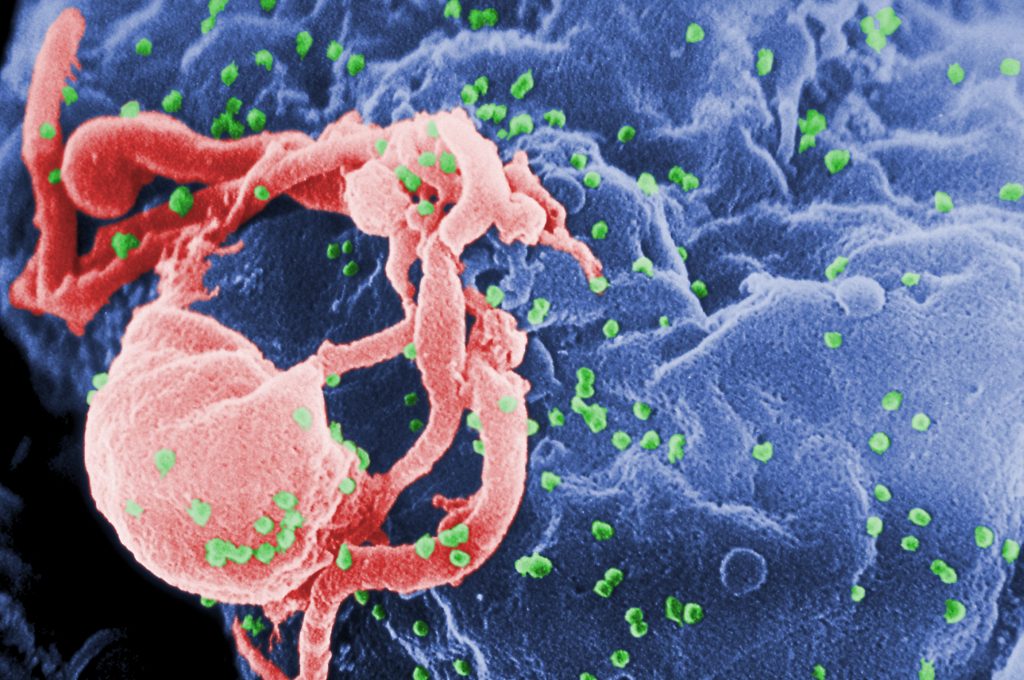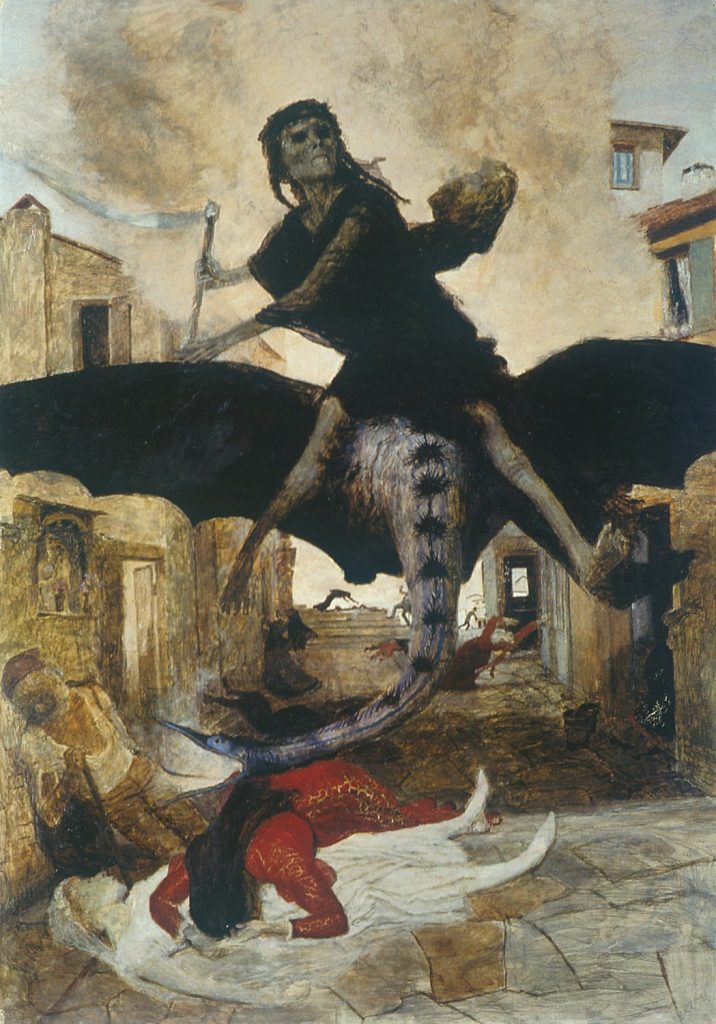Since the beginning of history, diseases have plagued humankind, bringing down civilizations and killing millions. Despite advanced in medicine curing old diseases, new strains of viruses and bacteria constantly pop out of nowhere, bringing deadly consequences each time. Here are 10 deadliest outbreaks that struck the world.
10. Great Plague of London

The Great Plague of London occurred in 1665 to 1666, in the city of London, England. Bubonic plague swept through the city, killing roughly 65 thousand people, according to records, but the more likely death toll is estimated at about a hundred thousand.
Rich folks like King Charles the Second and other nobles escaped the plague by running to another city, leaving most of the peasant and common folk to fend for themselves. Over 7000 people died in a single week in September of 1665, the highest death recorded in a single week. The plague was most likely spread by rats in London.
The plague slowly died out in the winter of 1665, and King Charles the Second returned to London the following spring. But the London tragedy did not end there.
On a night in 1666, as the city was slowly recovering from the London Plague, the Great Fire of London burnt down 13000 houses in the city, adding on to London’s problems. The fire likely started from a baker’s shop, and caused roughly a hundred thousand people to become homeless, with numerous dying in the fire.
Altogether, the London Plague and Fire claimed 100,000 lives in two years.
9. H1N1 swine flu

The swine flu, otherwise known as H1N1, is an influenza that originated in pigs. This virus was passed across species from pigs to humans. Like humans, sick pigs had flu symptoms, such as coughs, fevers, sneezes and loss of appetite. Some sick pigs did not show any symptoms.
Swine flu originated in Mexico in April 2009, when humans first showed symptoms of being infected by this new strain of flu virus. Similarly to pigs, some humans who were infected showed flu symptoms, while a minority did not show any symptoms at all. This flu spread quickly across the globe due to not many people having the immunity towards it at first, with some who got caught the flu bug becaming severely sick. Many of the very ill patients had respiratory failure, leading to their deaths. This virus eventually subsided, but cost 500 thousand lives in the process.
Now the swine flu shows up as one of the variety of influenzas during flu season. A flu jab is usually good enough to keep this virus away.
8. Asian flu and Hong Kong flu

The Asian flu, also known as H2N2, first begin in Guizhou, China in 1957. Within two months, the flu had spread to Hong Kong, and infected most countries in Asia by June. By the end of June, the virus had reached the United Kingdom and United States.
Causing pneumonia in the older population and pregnant women, the virus probably infected as many as 500 million people.
However, doctors worked quickly to produce a vaccine, and it was ready by the end of October in 1957. It was quickly deployed throughout the region, and halted the spread of the pandemic. However, the crafty virus was not totally eradicated, and its genes mutated to its new form H3N2.
In July 1968, the Hong Kong flu, the improved version now known as H3N2, began to spread in Hong Kong. By September of the same year, the virus had infected most of Asia, and had spread to the western hemisphere by December of the same year.
In total, both the Asian and Hong Kong flu stole the lives of 2.2 millon people around the globe.
7. Antonine Plague

In 165 to 180 AD, a deadly plague struck the soldiers of the Roman Empire returning from Near East, now known as the Middle East. Sufferers of the disease experienced fever, diarrhea, and red rashes appeared all over their bodies. The mysterious disease, now believed by historians to be either smallpox or measles, likely killed one of the ancient Roman emperors Lucius Verus as well.
The plague came in two waves. The first wave was during 165 AD to 166 AD. In the winter of these years, the Roman army attacking Mesopotamian city was struck by the unknown new disease at that time.
The second wave of the plague came in 189AD, destroying large part of the Roman army and Roman trade routes. Death tolls were as high as 2000 a day. This deadly plague caused the Roman Empire to almost fall to the Germanic invaders.
Approximately 5 million people perished from the Antonine plague.
6. Third Plague Pandemic

The Third Plague Pandemic is largely unknown to most of the western hemisphere of the world, as this pandemic mostly ravaged Asian countries. The bacteria causing the epidemic was a strain of the bubonic plague, from the same family of bacteria in the Black Death.
The plague originated in Yunnan, China in 1855, when the country was under the rule of the Qing Dynasty. It was first spread to Hong Kong in 1894, from the main transport system between the two places: ships. It was quickly transmitted throughout China due to civil war and refugee displacements, and was moved to India via Hong Kong, as both India and Hong Kong were British colonies at that time.
India was one of the worst hit places. Over the next three decades after the first appearance in Bombay in 1986, the Plague claimed 12 million lives throughout the country. Indians rioted throughout the streets expressing dissatisfaction about how the pandemic was being handled by the British. The Plague was one of the main spark for nationalism in India, paving the route to India’s independence.
Over the next five to six decades, the plague spread throughout various regions of the world, including Thailand, Cuba, and the USA. The pandemic eventually led to an estimate loss of 15 million lives worldwide.
5. Cocoliztil Pandemic

The Cocoliztil Pandemic occurred within the period of 1545 to 1642, a total of 97 years in New Spain, now known as Mexico. Most victim of the pandemic were native Aztec people. This event, together with the earlier smallpox plague with a death toll of 8 million, caused a sharp population plunge of about 90 percent.
There were two main periods of time when mass infection and death occurred, in 1545 and 1576. These deaths occurred due to a mysterious illness, now referred to as the Cocoliztil Pandemic. Nobody knew where it came from, or the illness was caused by. Modern day scientists believe the pandemic was caused by salmonella, brought over by the Europeans.
People inflicted by the disease experienced various symptoms, such as their skins turning yellow, fever, stomach and chest pains and bloody diarrhea. Later on, they also developed bleeding from the eyes, nose and mouth. People typically suffered for about 3 to 4 days before succumbing to the sickness.
The outbreak in 1545 claimed about 12 to 15 million lives, while the second outbreak in 1576 took about 2 million, making the total death toll about 14 to 17 million.
4. HIV

HIV, or Human Immunodeficiency Virus, is a group of virus that attacks the human immune system, causing AIDS (Autoimmune Deficiency Syndrome) over time if left untreated. When the immune system is disabled, deadly diseases like cancers and pneumonia can run unchecked in the body. Simple illnesses like coughs and flu can become life threatening due to the body’s lack of defense against any bacteria or viruses.
Most people get HIV from intercourse with an infected person, or by blood transfusion from someone carrying the disease. Transmition of the disease usually involve the transfer of bodily fluids such as blood or semen. An unborn child can get the virus from his or her mother if she’s infected. Many people who are unaware that they are carrying the virus, and only find out when they attempted to donate blood.
With over 35 million people killed by the virus in the world, HIV is one of the most persistent and deadly virus in modern times. Originally discovered in 1920 in the Democratic Republic of Congo, this virus spread rapidly for the next 60 years, reaching the United States in 1981.
Although the virus has been around for a century at the time of writing, and there are antiretroviral to control the virus, there is still no sign of a cure, making HIV one of the most powerful silent epidemic in the world.
3. Plague of Justinian

The Plague of Justinian, which started in the year 541AD and lasted till 549AD, was the start of the first plague pandemic, one of the deadliest plagues that swept through the much of the world, with an estimate loss of 25 million to 100 million lives. Modern scientists believe it to be a one of the strains of the bubonic plague, originated from Central Asia and spread by fleas.
Sufferers of this savage bacteria had symptoms such as fever, shivering, swollen lymph nodes, severe stomachaches and gangrene in limbs. Some people even went into coma and died. As many as 5000 people perished each day, and a fifth of Europe eventually fell to this bacteria.
This plague caused labor shortage, resulting in famines, and causing the Byzantine Empire to fail in retaking Italy. Eventually, the empire recovered. By the time the epidemic ended, the human cost was roughly 10 percent of the world’s population.
2. Spanish flu

The Spanish flu, also known as the 1918 H1N1 pandemic, is one of the most well-known and studied pandemics in the world. Occurring in the last century, it is one of the more recent plagues that struck humankind. Caused by a H1N1 virus strain from birds, it began sweeping across the globe in February 1918, and manage to infect 500 million people within the span of two years, a third of the total human population at that time. Despite the name, most scientists believe that the flu did not originate from Spain.
The epidemic attacked in four waves. The first wave was mostly harmless, with symptoms of common chills and fever. Most people who caught it in the first wave recovered within a couple of days. The second wave, however, was a different story. The virus mutated into a highly contagious and deadly form, causing millions of healthy young adults to drop dead from pneumonia within a few days of getting the virus, turning their faces blue and filling their lungs full of liquid.
As the world was nearing the end of World War One at that time, the impact of this influenza was kept hush by countries’ leaders. Many soldiers fighting in the war caught the virus, and with the ongoing war, the bodies quickly piled up. The number of dead troopers were higher in the Axis powers Germany and Austria than those of that in the Allied powers, and it is spectated that the flu helped to tilt the equilibrium of power near the ending of the war, making the Allied powers the winners of World War One.
The 1918 flu pandemic caused a death toll of 20 to 50 million people in total.
1. Black Death

In the thirteen century, Black Death spread rapidly around the world. Fleas, which hitched a ride on black rats, carried the bubonic plague from the Eastern to Western hemisphere via the Silk Road. Landing on the shore of Crimea (present day Russia) in 1347, trade galleys carried the rats to Italy, and quickly decimated the European population from there.
The bacteria responsible for the disease, Yersinia pestis, initially caused high fevers, puking and inflamed lymph nodes. The disease killed off tissues as it made it way through the human body, causing skin to rot and turn black. Infected people usually died within two weeks, and corpses kept piling up in the streets as people simply dropped dead from the disease. Mass graves were dug and bodies were hastily thrown in until the graves were full, while more holes were being dug to accommodate the rising body count.
The Black Death halved the population of Europe, and killed an estimated 75 to 200 million people in just four years. Even though a vaccine for the bubonic plague exists today, doctors around the world keep a close eye on the bubonic plague, in case it rears its ugly head again.
Bonus: Covid19

On 1 December 2019, a new form of coronavirus was first identified in Wuhan, China. Patient Zero was an elderly Chinese man in his seventies. The virus caused a deadly outbreak in the Wuhan county, overwhelming the hospitals in the area with sick patients who had breathing difficulties. China officially announced the existence of the novel coronavirus outbreak on 9 January 2020.
The first case of the coronavirus detected outside China was on 13 January, in Thailand, which came from Wuhan traveler. Within the same month, several countries declared their first cases of the virus. China imposed a lockdown of the Wuhan county and several nearby counties on 23th January 2020, and quickly imposed similar restrictions on areas with outbreaks within the next few weeks. Countries around the globe quickly shut off airline travelling to affected regions, hoping to stop the spread of the virus.
Covid-19 was declared as pandemic on 11 March 2020, after a surge in cases outside of China. Masks were in short supplies, and people began to snatch up what groceries they could in the supermarkets, including non-perishable food such as instant ramen, toiletries and bottled water. Gatherings and public events were discouraged or outright banned, and many non-essential businesses were forced to close.
As of July 2020, Covid-19 has spread to over 180 countries around the world, infected over 14 million people and rising, and took the lives of over 600 thousand people.
How did pandemics affect your life? Share your comments below!

